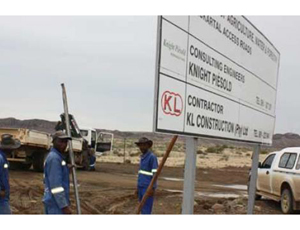

Several major African infrastructure projects, including some multibillion-dollar hydroelectric jobs, now are finding their progress beset by contracting disputes among global participants, protests from local communities and even cross-border sovereignty spats.
Egypt-Ethiopia Megaproject Brouhaha
Ethiopia’s construction of the $4.7-billion Great Renaissance Dam on the Nile River has jolted its diplomatic relations with nearby Egypt, which has opposed the project, saying it will compromise the quantity and quality of its share of water from the 6,727-kilometer river.
Tensions have been mounting since late May, when Ethiopia announced it was diverting a stretch of the Blue Nile, the Nile’s main tributary, to create room for the dam, under way 750 km northwest of Addis Ababa.
Project owner Ethiopia Electric Power Corp. said the diversion is necessary to enable contractor Salini to proceed.
The dam is Africa’s largest and will generate an estimated 6,000 MW of electricity when finished in 2017. Much of the electricity will be exported to neighboring countries.
Dam construction, now 21% complete, has followed a cooperative agreement signed by Ethiopia and other countries sharing the Nile, including Kenya, Tanzania, Uganda, Rwanda and Burundi. They claim the agreement repeals a 1929 water-allocation arrangement with Egypt. The Democratic Republic of Congo and South Sudan also are set to sign the new distribution agreement.
Shimeles Kemal, an Ethiopian government spokesman, said the pact “is a response to the unjust colonial imposition on the part of riparian states, preventing them from exploiting equitably the Nile resource.”
But Egyptian officials claim the agreement violates the original Nile pact. Under a 1959 revision, Egypt is entitled to 55.5 billion cu meters of water annually, with Sudan receiving 18.5 billion cu m.
At a Cairo rally in June, President Mohammed Morsi said Egypt has left “all options open.” However, he said, “We will not allow, at all, threats against our water security.”
Ethiopian officials point to a report that says the project will not significantly harm Egypt or Sudan. The report was jointly issued by experts from Egypt, Ethiopia and Sudan last month but not publicly released.
Salini says the project will include a roller-compacted-concrete main dam and two powerhouses. At least 10 million metric tonnes of concrete will be used in the main dam's construction. The project also consists of a concrete-lined gated spillway and a 5-km- long, 50-m-high saddle dam.
French firm Alstom has been awarded a $330-million contract for equipment installation, engineering and powerplant commissioning. China is providing about $1.8 billion in turbine and equipment finance, while Ethiopia says it will raise the rest from internal sources.
Namibian Dam Bid Protest
In Namibia, meanwhile, Salini is at the center of another dispute, this time involving a legal challenge by losing competitors to its win of a $332-million construction contract for the Neckartal dam.
A joint venture of France's Vinci Construction and Egypt's Orascom Construction and a consortium of Italian, South African and local companies are protesting the government award. The project has been delayed the project for over a year.

Post a comment to this article
Report Abusive Comment